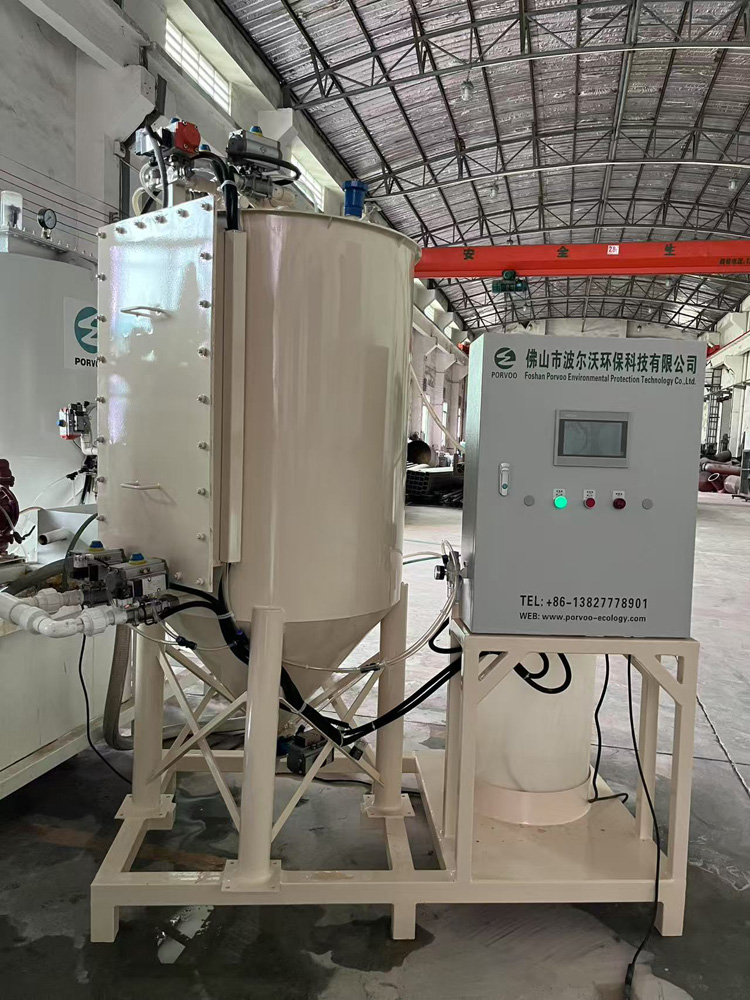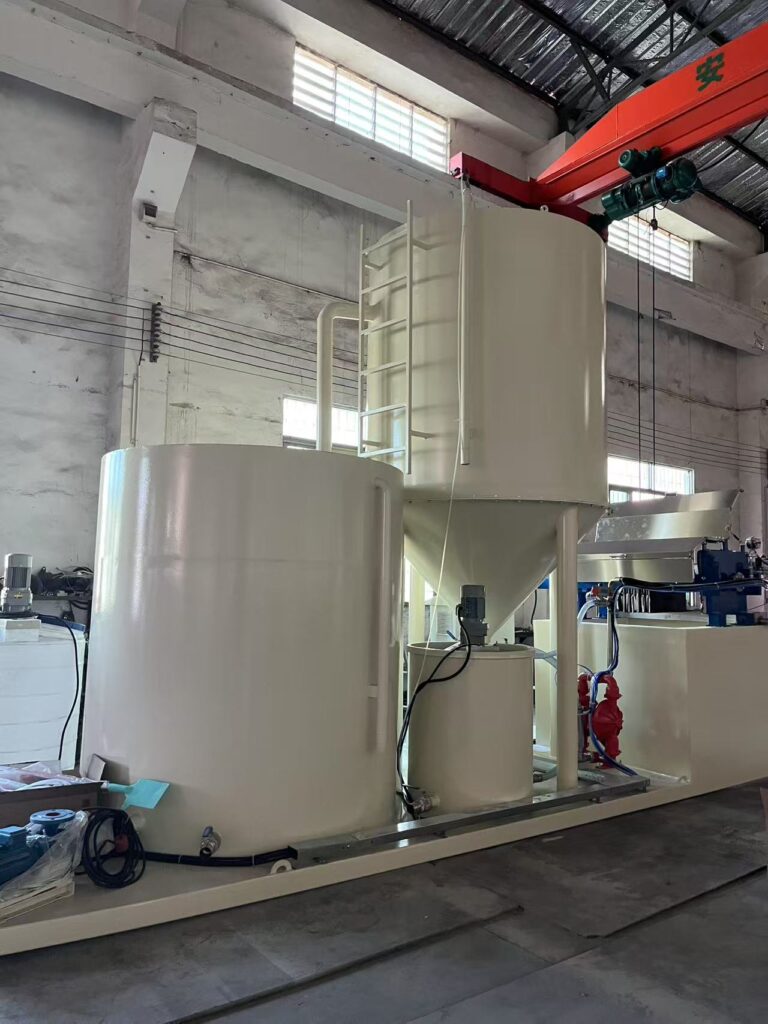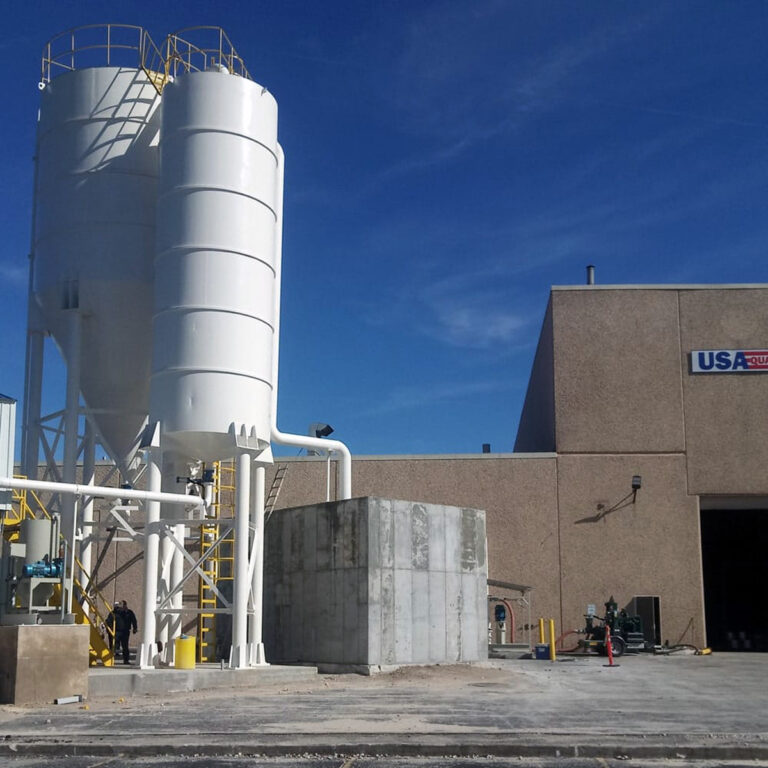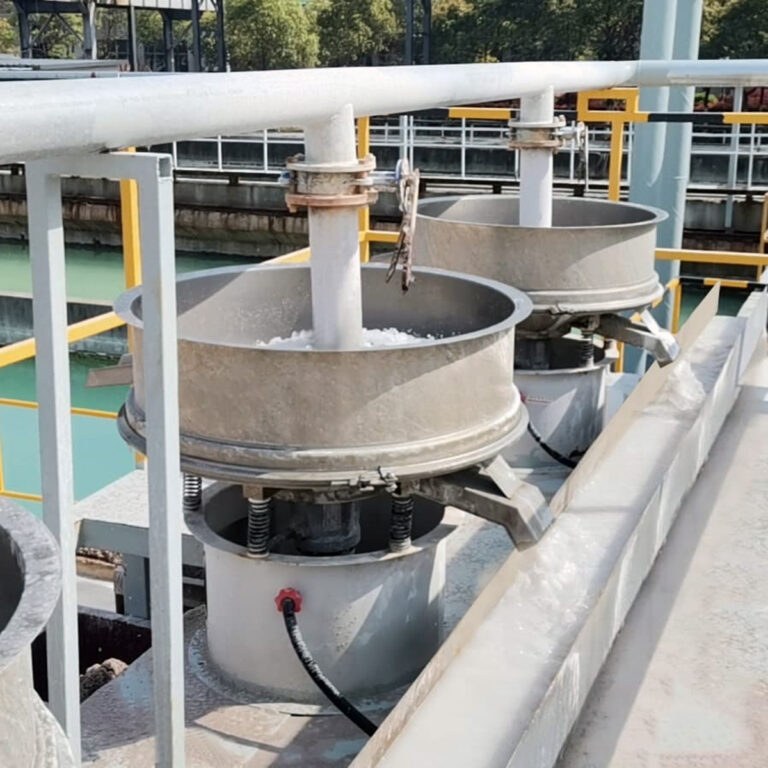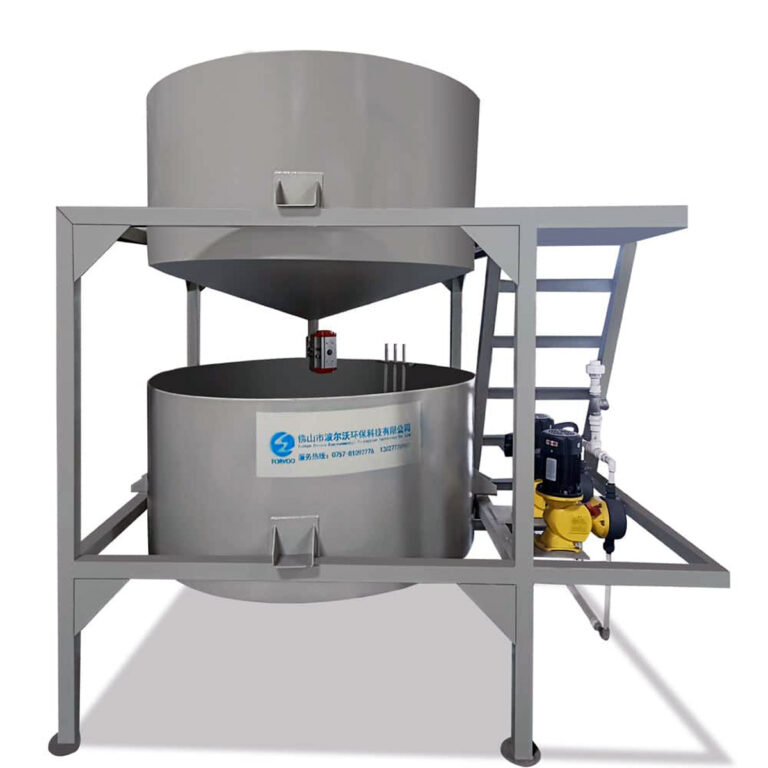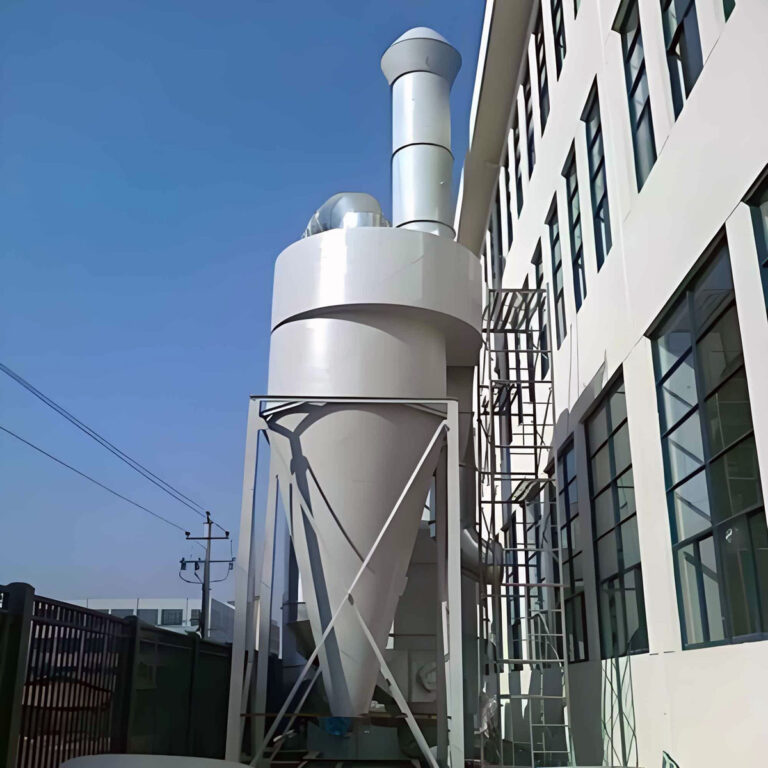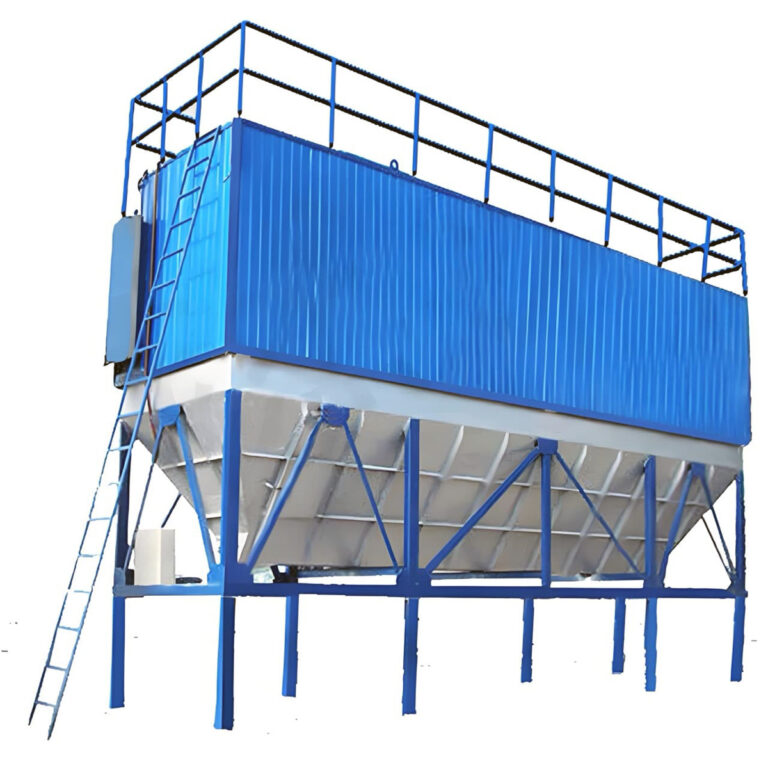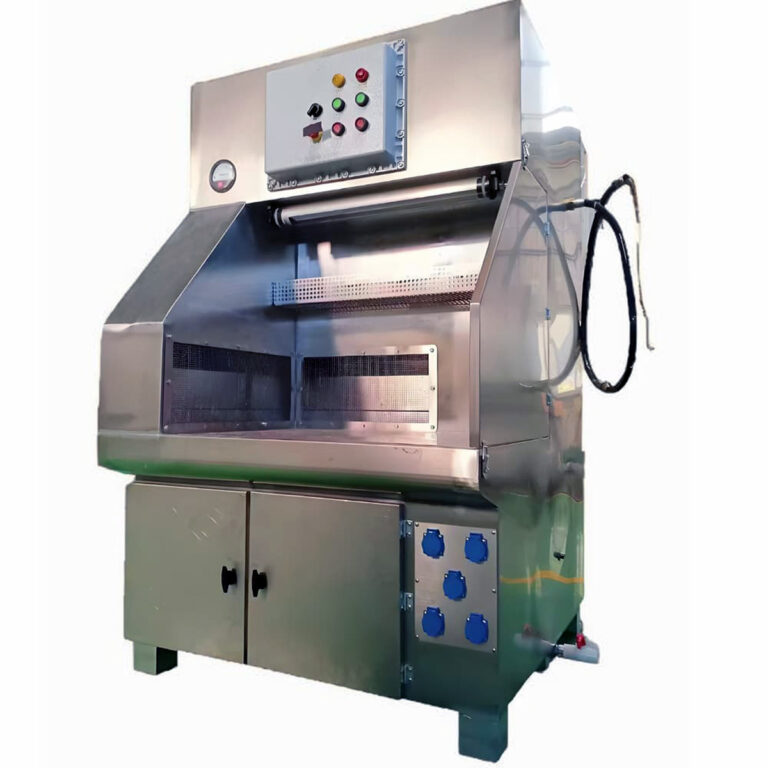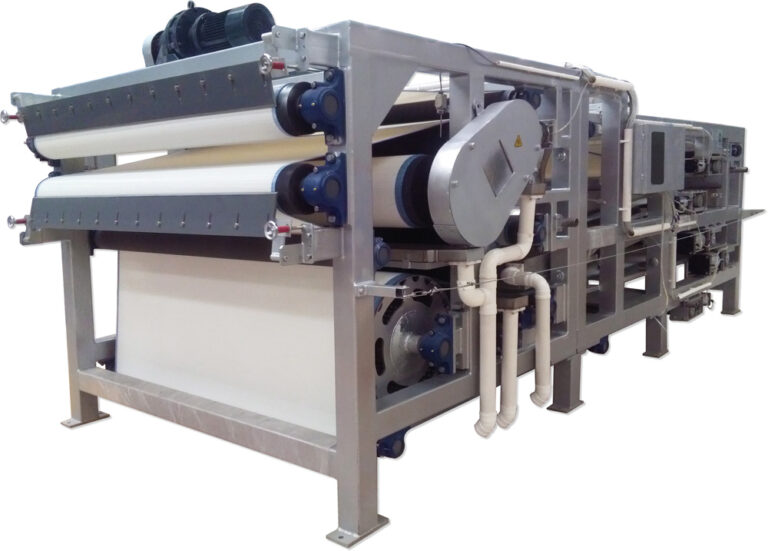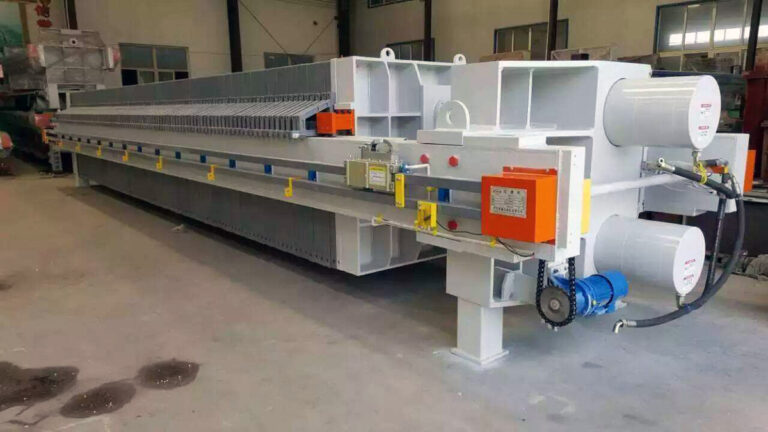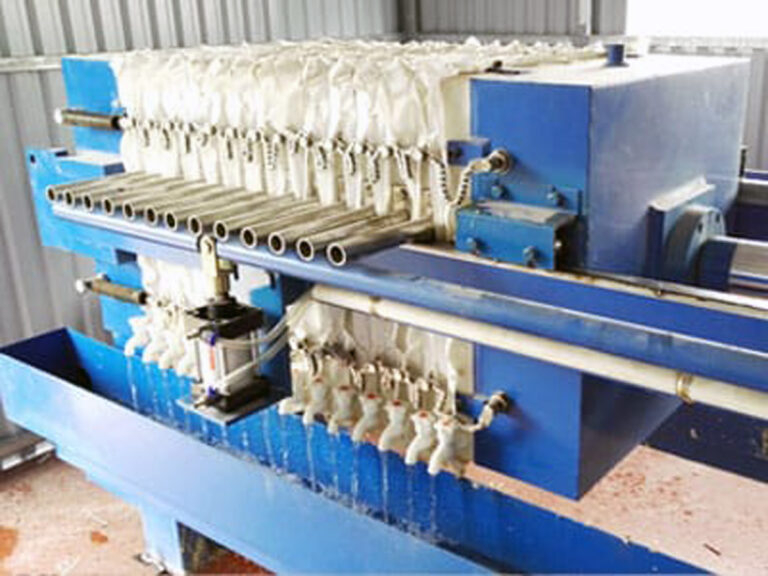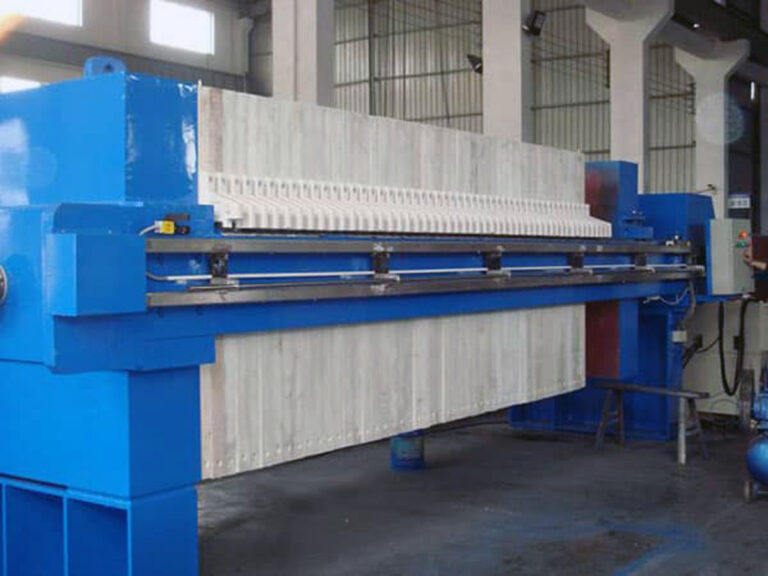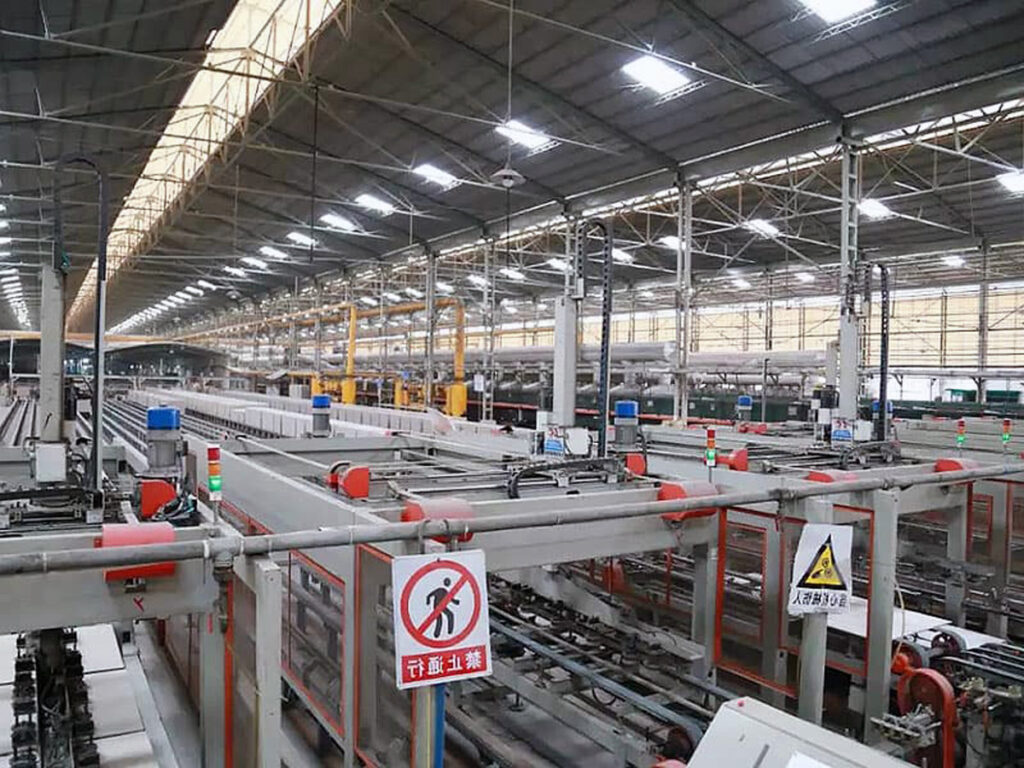The ceramic manufacturing sector generates some of the most challenging industrial wastewater streams, with ceramic industry wastewater containing complex mixtures of clay particles, chemical additives, and process-specific contaminants that demand specialized treatment approaches. As environmental regulations tighten and water costs escalate, ceramic manufacturers face mounting pressure to implement effective wastewater management systems that not only ensure compliance but also maximize resource recovery.
Problem: Ceramic facilities typically discharge 2-5 cubic meters of wastewater per ton of finished product, containing suspended solids concentrations reaching 10,000-50,000 mg/L – levels that can devastate municipal treatment systems and natural water bodies. Many manufacturers struggle with outdated treatment systems that fail to meet increasingly stringent discharge standards, resulting in costly fines and operational disruptions.
Consequences: Without proper treatment, ceramic wastewater can cause severe environmental damage, including waterway siltation, aquatic ecosystem disruption, and groundwater contamination. Facilities face potential shutdowns, regulatory penalties exceeding $50,000 daily, and permanent damage to their environmental reputation that affects customer relationships and market access.
Solution: This comprehensive guide examines proven ceramic processing wastewater treatment technologies, implementation strategies, and optimization approaches that have helped manufacturers achieve 95%+ contaminant removal while recovering up to 80% of process water for reuse. PORVOO specializes in developing these advanced treatment solutions for ceramic industry applications.
What is Ceramic Industry Wastewater and Why Does It Matter?
Understanding Ceramic Manufacturing Water Contamination
Ceramic industry wastewater originates from multiple production stages, each contributing distinct contaminant profiles that complicate treatment efforts. The forming and shaping processes generate high concentrations of clay particles and silica, while glazing operations introduce heavy metals like lead, cadmium, and chromium. Firing and cooling stages produce thermal pollution and dissolved salts that affect water chemistry balance.
Research conducted by the Ceramic Manufacturing Association indicates that untreated ceramic wastewater contains suspended solids levels 200-500 times higher than typical municipal wastewater. In our experience working with ceramic manufacturers, the heterogeneous nature of these contaminants requires multi-stage treatment approaches rather than single-technology solutions.
| Contaminant Type | Typical Concentration | Treatment Challenge |
|---|---|---|
| Suspended Solids | 15,000-45,000 mg/L | High settling requirements |
| Clay Particles | 8,000-25,000 mg/L | Fine particle removal |
| Heavy Metals | 5-150 mg/L | Specialized extraction needed |
| Chemical Additives | 100-2,000 mg/L | Complex chemistry management |
Environmental Impact Assessment
The environmental implications of ceramic wastewater discharge extend far beyond immediate water quality concerns. Studies by the Environmental Protection Research Institute show that untreated ceramic effluent can increase receiving water turbidity by 300-800% within a 2-kilometer downstream radius. This dramatic increase in suspended solids reduces light penetration, disrupting photosynthetic processes that form the foundation of aquatic food chains.
Heavy metal contamination presents particularly severe long-term risks, as compounds like lead and cadmium bioaccumulate in aquatic organisms and persist in sediments for decades. A 2023 study documented lead concentrations 15-40 times above safe drinking water standards in groundwater near untreated ceramic discharge points.
Regulatory Compliance Requirements
Federal and state regulations governing ceramic industry wastewater have become increasingly stringent, with EPA discharge limits for suspended solids typically capped at 30 mg/L for direct discharge and 100 mg/L for indirect discharge. Heavy metal limits are even more restrictive, with lead discharge limited to 0.69 mg/L daily maximum and cadmium to 0.26 mg/L.
It’s worth noting that compliance isn’t just about meeting minimum standards – many municipalities now impose surcharge fees for industrial dischargers exceeding 300 mg/L suspended solids, adding $2-8 per 1,000 gallons in additional treatment costs that can significantly impact operational budgets.
What Are the Main Challenges in Ceramic Processing Wastewater Treatment?
High Suspended Solids and Turbidity Issues
The primary challenge in ceramic processing wastewater treatment stems from extraordinarily high suspended solids concentrations that can overwhelm conventional clarification systems. Clay particles in the 0.1-10 micron range exhibit colloidal properties, remaining stably suspended for extended periods without proper chemical conditioning.
Traditional settling systems require detention times of 6-12 hours to achieve modest solids removal, occupying valuable plant space while delivering inconsistent results. Advanced clarification technologies like inclined plate settlers and dissolved air flotation systems can reduce required footprint by 60-75% while achieving superior removal rates.
According to industry performance data, effective suspended solids management requires multi-stage approaches combining coagulation, flocculation, and advanced separation technologies to consistently achieve discharge standards.
Chemical Additives and pH Management
Ceramic manufacturing processes utilize numerous chemical additives that complicate wastewater treatment chemistry. Deflocculating agents like sodium silicate and sodium carbonate elevate pH levels to 9-12, while organic binders and plasticizers create stable emulsions resistant to conventional treatment methods.
pH fluctuations present ongoing operational challenges, as optimal treatment conditions typically require pH adjustment to 6.5-7.5 for effective coagulation and flocculation. Automated pH control systems with real-time monitoring capabilities are essential for maintaining treatment efficiency, though they add complexity and operational costs.
While chemical treatment proves highly effective for contaminant removal, the generation of treatment sludge requiring disposal can increase overall waste management costs by 25-35% compared to upstream process modifications.
Volume Variations and Flow Rate Management
Ceramic production cycles create significant wastewater flow variations, with peak discharge rates often exceeding average flows by 300-500%. These variations challenge treatment system sizing and operation, as systems must handle peak loads without compromising treatment quality during low-flow periods.
Equalization systems become critical for managing flow variations, though they require substantial storage capacity – typically 8-24 hours of average flow – to effectively dampen hydraulic surges. Smart control systems can optimize equalization basin operation, reducing required storage volume by 20-30% through predictive flow management.
How Does Ceramic Tile Wastewater Differ from Other Industrial Streams?
Unique Contaminant Profiles
Ceramic tile wastewater exhibits distinctly different characteristics compared to other ceramic manufacturing streams due to specialized glazing and decoration processes. Tile production generates higher concentrations of colorants, including chromium-based compounds that create vibrant greens and blues, and iron oxides producing red and yellow hues.
Digital printing processes increasingly used in modern tile manufacturing introduce solvent-based inks and cleaning solutions that require specialized treatment approaches. These organic compounds resist biological degradation and often require advanced oxidation processes for complete removal.
A comparative analysis of ceramic subsectors reveals that tile manufacturing wastewater contains 40-60% higher heavy metal concentrations than structural ceramic production, necessitating enhanced treatment capabilities.
Treatment System Requirements
The complex chemistry of ceramic tile wastewater demands sophisticated treatment system design incorporating multiple removal mechanisms. Physical-chemical treatment forms the foundation, typically achieving 85-95% suspended solids removal through optimized coagulation and clarification processes.
Advanced treatment stages often include activated carbon adsorption for organic compound removal and selective ion exchange for heavy metal recovery. These tertiary treatment processes add operational complexity but enable consistently meeting stringent discharge standards while recovering valuable materials.
| Treatment Stage | Primary Function | Typical Removal Efficiency |
|---|---|---|
| Coagulation/Flocculation | Suspended solids aggregation | 80-90% |
| Clarification | Solids separation | 75-85% |
| Filtration | Polishing removal | 90-99% |
| Advanced treatment | Specific contaminants | 85-98% |
Recovery and Recycling Opportunities
Modern ceramic tile wastewater treatment systems incorporate extensive water recovery capabilities, with properly designed systems achieving 70-85% water reuse rates. Recovered water quality typically meets or exceeds incoming process water standards for most applications, reducing freshwater consumption and discharge volumes proportionally.
Clay and ceramic body recovery presents additional value opportunities, with treated sludge often suitable for return to production processes after dewatering and processing. This closed-loop approach can reduce raw material costs by 5-15% while minimizing waste disposal requirements.
What Are the Most Effective Ceramic Manufacturing Water Solutions?
Primary Treatment Technologies
Effective ceramic manufacturing water solutions begin with robust primary treatment systems designed to handle the unique challenges of ceramic wastewater. Coagulation and flocculation processes form the treatment foundation, utilizing aluminum or iron-based coagulants to destabilize colloidal clay particles and promote aggregation into settleable flocs.
High-rate clarification systems employing inclined plate technology or dissolved air flotation achieve superior performance in compact footprints. These advanced primary systems consistently deliver 88-95% suspended solids removal while reducing hydraulic retention time to 2-4 hours compared to conventional clarifiers requiring 8-12 hours.
In our experience implementing these systems, proper chemical dosing control proves critical for optimizing performance. Automated coagulant feed systems with turbidity-based feedback control maintain optimal treatment efficiency while minimizing chemical consumption by 15-25%.
Advanced Filtration Systems
Secondary treatment through advanced filtration provides the polishing necessary to consistently meet discharge standards. Multimedia filtration systems utilizing graduated media layers effectively remove residual suspended solids to less than 10 mg/L, while specialized media configurations can simultaneously address specific contaminants like heavy metals.
Membrane filtration technologies, including microfiltration and ultrafiltration, achieve superior performance for water recovery applications. These systems produce consistently high-quality treated water suitable for direct reuse in ceramic processes, though they require careful pretreatment to prevent membrane fouling from clay particles.
Backwash optimization becomes crucial for maintaining filtration system performance, with automated backwash controls extending filter run times by 30-50% while ensuring consistent treated water quality.
Biological Treatment Integration
While ceramic wastewater contains primarily inorganic contaminants, biological treatment can effectively address organic additives and binders used in modern ceramic processes. Activated sludge systems designed for industrial applications achieve 75-90% organic reduction while providing excellent pH buffering capacity.
Sequential batch reactor (SBR) technology offers particular advantages for ceramic applications, providing operational flexibility to accommodate varying organic loads and chemical compositions. These systems adapt readily to production schedule changes while maintaining stable biological populations.
However, biological systems require careful monitoring for heavy metal concentrations that can inhibit microbial activity. Upstream heavy metal removal often proves necessary to maintain biological treatment effectiveness.
How to Implement Ceramic Plant Wastewater Management Systems?
System Design Considerations
Successful ceramic plant wastewater management implementation begins with comprehensive characterization of wastewater streams and production processes. Flow measurement and contaminant analysis over complete production cycles reveals design parameters necessary for proper system sizing and configuration.
Modular system design provides operational flexibility and facilitates future expansion or process modifications. Treatment systems designed with 25-35% capacity reserve accommodate production increases while maintaining treatment performance during peak discharge periods.
Site-specific factors including available space, utility access, and discharge requirements significantly influence system configuration. Compact treatment technologies may command premium pricing but offer substantial value when site constraints limit conventional system installation.
Operational Optimization Strategies
Effective operational management requires comprehensive monitoring protocols tracking key performance indicators across all treatment stages. Real-time monitoring of pH, turbidity, and flow rates enables rapid response to upset conditions while automated control systems maintain optimal treatment performance.
Regular system performance evaluation identifies optimization opportunities that can reduce operating costs while improving treatment effectiveness. Performance trending analysis often reveals patterns enabling predictive maintenance scheduling that minimizes unexpected downtime.
| Parameter | Monitoring Frequency | Target Range | Action Threshold |
|---|---|---|---|
| pH | Continuous | 6.5-7.5 | ±0.5 units |
| Turbidity | Continuous | <50 NTU | 100 NTU |
| Flow Rate | Continuous | Design range | ±20% variation |
| Coagulant Dosage | Continuous | Optimized | Performance-based |
Staff training and standard operating procedures ensure consistent system operation across all shifts and personnel changes. Well-trained operators can optimize system performance to achieve 5-15% improvements in treatment efficiency and chemical usage.
Monitoring and Maintenance Protocols
Preventive maintenance programs extending equipment life while ensuring reliable operation require systematic scheduling based on equipment manufacturer recommendations and site-specific operating conditions. Critical equipment redundancy minimizes process disruptions during maintenance periods.
Laboratory analysis protocols should include daily operational monitoring and comprehensive monthly testing to verify discharge compliance and identify potential issues before they impact performance. Quality assurance procedures ensure consistent testing accuracy and regulatory compliance.
Emergency response procedures addressing potential upset conditions, equipment failures, and regulatory exceedances require detailed documentation and regular staff training to ensure effective implementation when needed.
What Are the Cost-Benefit Considerations for Treatment Solutions?
Capital Investment Analysis
Capital costs for comprehensive ceramic wastewater treatment systems typically range from $150,000-500,000 for small facilities processing 50,000-200,000 gallons daily, scaling proportionally for larger installations. Advanced treatment capabilities including heavy metal removal and water recovery increase initial investment by 35-60% but provide operational benefits justifying higher capital costs.
Financing options including equipment leasing and municipal partnership programs can reduce upfront capital requirements while providing immediate regulatory compliance. Many manufacturers find that avoided penalty costs and reduced discharge fees provide positive cash flow within 18-24 months of system installation.
Engineering and installation costs generally represent 25-35% of total project investment, with experienced industrial wastewater treatment specialists providing value through optimized system design and efficient project execution.
Operating Cost Optimization
Operating expenses for ceramic wastewater treatment typically include chemical costs ($0.15-0.40 per 1,000 gallons), energy consumption ($0.05-0.15 per 1,000 gallons), and labor requirements (0.5-2.0 hours per day for small systems). Optimization opportunities exist across all these categories through proper system design and operation.
Chemical cost management through bulk purchasing, automated dosing control, and alternative product evaluation can reduce chemical expenses by 20-30% while maintaining or improving treatment performance. Energy cost reduction through high-efficiency equipment and off-peak operation scheduling provides additional savings opportunities.
While treatment systems require ongoing operational attention, automated control systems minimize labor requirements while ensuring consistent performance and regulatory compliance.
ROI Through Water Recovery
Water recovery systems generating 70-85% reuse rates provide substantial value through reduced freshwater consumption and discharge volume reduction. Freshwater savings of $2-6 per 1,000 gallons and proportional discharge cost reductions create ongoing operational savings supporting treatment system investment.
Environmental benefits including reduced environmental impact, enhanced regulatory compliance, and improved community relations provide intangible value supporting corporate sustainability objectives and market positioning.
Long-term value creation through future regulatory compliance, operational flexibility, and environmental stewardship positions manufacturers for continued success in an increasingly regulated industry environment.
Conclusion
Effective ceramic industry wastewater management requires sophisticated understanding of contaminant characteristics, treatment technologies, and operational optimization strategies that address the unique challenges of ceramic manufacturing processes. The integration of advanced physical-chemical treatment with intelligent process control enables manufacturers to achieve consistent regulatory compliance while maximizing water recovery and minimizing operational costs.
Key implementation success factors include comprehensive wastewater characterization, appropriate technology selection, and robust operational protocols that ensure reliable long-term performance. Ceramic manufacturing water solutions must balance treatment effectiveness with economic viability, incorporating proven technologies that deliver measurable environmental and financial benefits.
Investment in professional wastewater treatment systems provides immediate regulatory compliance while supporting long-term operational sustainability and environmental stewardship. Forward-thinking manufacturers recognize that effective wastewater management represents a competitive advantage through reduced operational costs, enhanced environmental performance, and improved regulatory relationships.
The ceramic industry’s continued evolution toward more sustainable production practices will likely drive increased adoption of advanced treatment technologies and closed-loop water management systems. Manufacturers investing in comprehensive wastewater treatment infrastructure today position themselves advantageously for future regulatory requirements and market expectations.
For manufacturers ready to implement proven ceramic wastewater treatment solutions, specialized industrial treatment systems offer the expertise and technology necessary to achieve optimal environmental and economic performance. What specific ceramic wastewater challenges is your facility currently facing, and how might advanced treatment solutions address your operational requirements?
Frequently Asked Questions
Q: What is ceramic industry wastewater, and why does it need specialized solutions?
A: Ceramic industry wastewater is the liquid effluent generated during ceramic manufacturing processes. It often contains high levels of suspended solids, heavy metals, and chemical pollutants, making it complex to treat. Specialized solutions are essential to effectively remove these contaminants to meet environmental regulations and prevent water pollution. Conventional treatment methods face challenges due to the wastewater’s composition, so advanced, chemical-free technologies like ceramic membrane filtration are preferred for better efficiency and sustainability.
Q: How do specialized solutions like ceramic membrane filtration improve treatment of ceramic industry wastewater?
A: Ceramic membrane filtration uses highly porous ceramic elements to physically separate contaminants from wastewater without harsh chemicals. This process offers benefits such as:
- High removal rates of emulsified and suspended solids
- Chemical resistance and durability under harsh conditions
- Reduced fouling and longer operation times before cleaning is required
- Lower energy consumption compared to traditional methods
Such systems ensure treated water quality suitable for reuse or safe discharge, supporting environmental compliance and cost savings.
Q: What are the main challenges faced when treating ceramic industry wastewater?
A: The primary challenges include:
- Presence of organic compounds, heavy metals, and refractory chemicals
- High chemical oxygen demand (COD) and biological oxygen demand (BOD) levels
- Potential membrane fouling due to suspended solids and contaminants
- Need to comply with strict regulations limiting pollutant discharge
Specialized methods must address these while minimizing chemical additives to allow potential water reuse within the industry.
Q: Can ceramic industry wastewater be recycled and reused after treatment?
A: Yes, with specialized solutions like advanced membrane filtration and sludge treatment technologies, ceramic industry wastewater can be safely recycled. These systems eliminate harmful contaminants and enable full reuse of treated water in industrial processes, reducing freshwater consumption and lowering environmental impact. This approach supports sustainable manufacturing by closing the water loop and minimizing waste.
Q: What makes multi-stage filtration effective for ceramic wastewater treatment?
A: Multi-stage filtration combines different membrane filtration types such as microfiltration (MF), ultrafiltration (UF), and nanofiltration (NF) to enhance contaminant removal. The sequential process:
- Removes larger particles and suspended solids through MF
- Targets smaller organics and fine particles with UF
- Filters dissolved contaminants including heavy metals with NF
This layered approach improves overall treatment efficiency, reduces membrane fouling, and achieves regulatory pollutant limits more reliably than single-step filtration.
Q: Are there environmental benefits to using specialized ceramic wastewater treatment solutions?
A: Absolutely. These solutions:
- Avoid use of harmful chemical agents, reducing secondary pollution
- Lower energy consumption compared to conventional processes
- Enable water and sludge reuse, conserving natural water resources
- Help facilities meet stringent environmental regulations and reduce discharge penalties
By adopting such technologies, ceramic manufacturers can minimize their ecological footprint while maintaining production efficiency.
External Resources
- Ceramic Membrane Filtration for Industrial Wastewater – Kemco Systems – Details Kemco’s patented ceramic membrane filtration system, which removes emulsified and suspended contaminants from industrial wastewater, enabling cost-effective, chemical-free recycling in sectors like food processing and commercial laundry.
- Effective Treatment of Wastewater from Ceramic Industry Using Ceramic Membrane Technology – IWA Publishing – Presents a peer-reviewed study on the use of ceramic membrane filtration (micro-, ultra-, and nanofiltration) to effectively reduce chemical oxygen demand (COD) and pollutants in ceramic industry wastewater.
- Ceramic Flatsheet Membrane System – MEIDENSHA CORPORATION – Describes a durable, multipurpose ceramic flatsheet membrane system designed for challenging wastewater types, including those with oils, solvents, and hard solids, with features for robust operation and low maintenance.
- Ceramic Industry Breakthrough Waste Water Treatment Solutions – VentilAqua – Outlines a specialized solution for treating and reusing ceramic industry wastewater, emphasizing full water and sludge recovery and compliance with environmental regulations.
- Industrial Waste Water: Ceramic Membranes for Treatment and Recovery – Aquatech – Provides an overview of ceramic membrane technologies for industrial wastewater, including ceramic industry applications, focusing on contaminant removal and water recovery for reuse.
- Advanced Ceramic Membrane Solutions for Industrial Wastewater – Porex Filtration – Explains advanced ceramic membrane solutions for industrial wastewater treatment, highlighting their resistance to fouling and harsh chemicals, suitable for demanding ceramic manufacturing environments.
